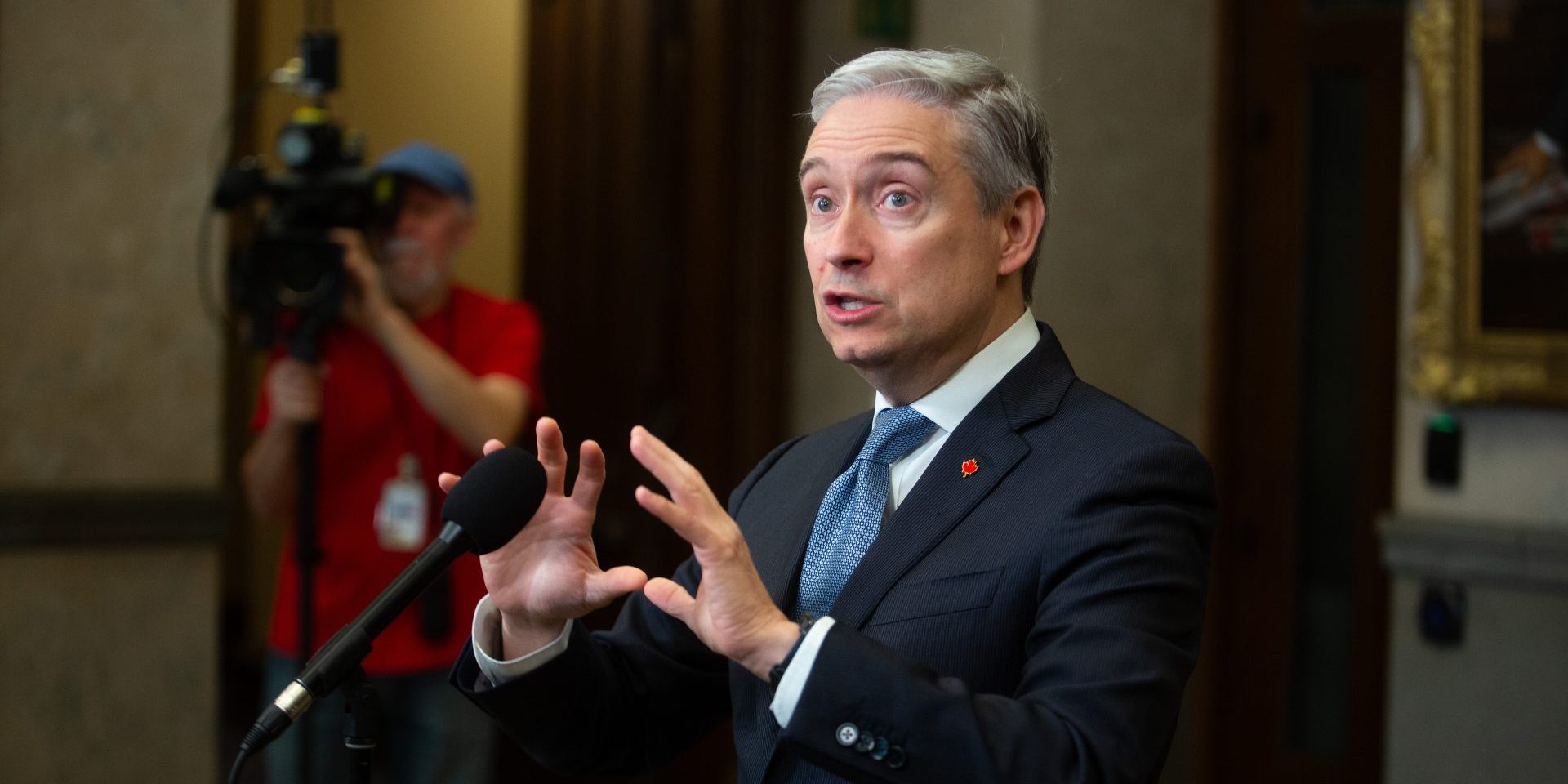CRA complaints on the rise as deep job cuts forecast: ‘I’ll be honest, we’re swamped’

The Canada Revenue Agency’s watchdog says complaints are on the rise, while the agency forecasts a 10-per-cent reduction in staff over the next three years.
Taxpayers’ ombudsperson François Boileau says his office is nearing the record-high level of complaints it received during the COVID-19 pandemic, when Canadians were scrambling to receive CERB and other emergency benefits.
“Our office was quite popular at the time,” he said, “But now, we’re getting a multitude of complaints touching a multitude of programs. I’ll be honest, we’re swamped.”
The office received 3,533 complaints in 2020-21, and complaints peaked at 3,874 in 2021-22. The office saw a 43.4 per cent decrease in complaints in 2022-23, but complaints are back on the rise, totalling 2,796 in 2024-25, the annual report says.
About 25 per cent of complaints to the taxpayer ombud last year were around the CRA’s contact centres, Boileau said, including long wait times, dropped calls, or information that is incomplete, inaccurate, or otherwise unclear.
When the federal public service shrank by 10,000 jobs between the 2024 and 2025 fiscal years, the CRA bore the brunt of those cuts, with the large department reporting 6,656 fewer employees between 2024 and 2025. That represents 68 per cent of jobs lost in the public service, reported as of March 2025.
Further cuts are forecast, too. The CRA’s latest departmental plan forecasts that the agency will employ 47,732 full-time equivalent staff by 2027–28, down from the planned 50,804 for the current fiscal year. That total already represented a 2,103 job reduction from the 52,907 staff from the year before, as a part of a steady decline reported since 2023-24, when the CRA employed more than 55,000 workers.
The biggest job losses are expected to occur in tax-related programs—a category which has the most staff to begin with—as 3,877 full-timers are projected to be cut from the agency, about nine per cent of the total, over three years.
The agency’s departmental plan cites the end of COVID-19 pandemic-era programs, the consumer carbon tax, the temporary sales tax holiday, and funding cuts in general as reasons behind the personnel cuts.
Boileau said his office is currently working on complaints that were received back in May. A notice on his office’s website said there is also a 120-day delay in assigning cases needing an examination.

“We’re being up front with complainants, but it’s not cool for us to do this,” he said. “It’s not fun, because we’re an ombud’s office. We’re supposed to respect our own standards of service, but we’re not.”
Boileau said it’s too early to make a “clear determination” if the cuts have resulted in more complaints, but he said awareness and outreach of his office has been increasing, which would lead to more complaints.
His office doesn’t publish quarterly reports on the number of complaints it has received, he said, but they’ve seen an “uptick” over the last quarter, he said.
“But my estimated guess is that we will see, at some point, clear correlation,” he said. “But we’re not here yet.”
The Office of the Taxpayers’ Ombudsperson is funded via the CRA, and the departmental plan shows a funding cut of roughly 10 per cent over the coming three years, from $5.3-million this year to $4.8-million by 2027-28. That includes dropping five staff, with 33 people earmarked for 2027-28.
According to the Treasury Board’s main estimates, the CRA’s estimates to date are over $20-billion. Its main estimates for 2025-26 are approximately half of that, at just over $10-billion.
John Oakey is vice-president of taxation for CPA Canada, an organization that represents more than 220,000 chartered professional accountants across the country. He noted the CRA’s workforce has significantly increased in recent years, partially due to administering pandemic-era programs that are now finished.
But a lot of tax legislation has recently entered into the system, he said, citing mandatory disclosure rules, trust reporting, the now-repealed digital service tax, the global minimum tax, underused housing tax, and more, along with social programming like the universal dental care program also being administered by the CRA.
“With all this new legislation and additional services, how many people do they really need in order to execute these programs, with the loss of some old programs?” he said. “From the outside looking in, it’s very difficult to understand if this reduction is good or bad.”
CPA Canada represents the “frontline workers of the tax system,” he said, and has working groups with the CRA, and also has committees of accountants from each province that meet regularly.

Photo from LinkedIn
“In those meetings, we consistently and constantly hear about the poor service that comes from CRA,” he said in a recent interview, adding these complaints are backed up by lots of reports by the taxpayer ombud’s office. “There are a lot of services required from the CRA that have very long, unacceptable time frames.”
If a staff reduction is focusing on redundant services, then it could be positive, but eliminating senior people who are highly experienced and educated could “be a problem,” he said.
“You lose that in the training of the new staff, and it increases chance of errors when dealing with taxpayers,” Oakey said. “That’s always a concern we have, whenever you see significant cuts from CRA, the loss of experience from senior agents.”
He noted the CRA has recently launched a pilot generative AI chatbot, as outlined in its recently published departmental plan. The chatbot was launched this past March, billed as available 24/7 to answer questions about charities, personal income tax, and information related to accessing a CRA account.
“I have concerns, if you’re losing staff and replacing it with AI automation, are you losing that experience and implementing AI and automation properly?” he said. “You don’t want to have inexperienced people using AI, you want experienced people.”
Previously, CRA spokesperson Sylvie Branch told The Hill Times that the chatbot is supposed to reduce call volumes in contact centres, but isn’t intended to replace human agents. Instead, it helps people get information from the CRA’s labyrinthian website.
As ministers have been tasked with cutting their budgets by 15 per cent over the next three years, Oakey said he’s concerned education and training could be on the chopping block.
“If you match that with the reduction of probably senior agents, you’re losing a lot of experience and education,” he said. “And that will have long-term implications, because it will take a long time to gain that experience and knowledge back up.”
Tax lawyer Ben Isaak said he already sees significant delays in processing files, like objections or disputes with the CRA. Law clerks regularly call the CRA for status updates, and are sometimes unable to get in contact with an agent on the general inquiries line, he said.
While processing times are understandable, Isaak said he has one client who filed a “standard tax form” in March 2024 and has yet to hear back.
Tax lawyer Alex Klyguine noted the CRA is approximately six times larger per capita than the United States Internal Revenue Service.
“Their agency seems to be functioning quite fine, with way fewer people,” he said. “Perhaps the question here is not the number of people, but the complexity of the tax system, and the efficiency at the agency.”
He added Canadian tax law is “extremely complicated” and has grown in complexity over the years.
“Very few people really understand how our tax laws work, even tax lawyers struggle with it sometimes,” he said. “Reducing complexity will go a long way towards simplifying the administration of the system, and obviously perhaps that will reduce the number of people needed to administrate the whole system.”
Editor’s note: This story has been updated with the correct number of accountants represented by CPA Canada. The Hill Times regrets the error.
mglass@hilltimes.com
The Hill Times






 LICENSING
LICENSING PODCAST
PODCAST ALERTS
ALERTS













